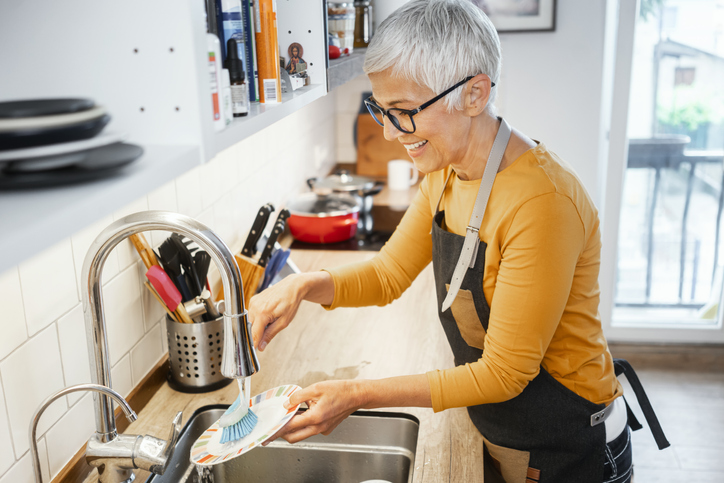Living with Chronic Pain
Adaptive Equipment for the Kitchen

When living with chronic pain, preparing meals can be a difficult task. Some ideas and equipment that make cooking less of a chore, or possibly even an enjoyable activity, include the following:

Location, location, location
The location of needed utensils and ingredients makes a lot of difference while cooking or baking. Rearranging items that are regularly used, such as certain spices, favorite pots and pans and even ingredients in the refrigerator to make sure they are easily accessible, makes working in the kitchen more enjoyable. This minimizes the amount of reaching, walking and bending required to prepare and cook a meal.

Assistive furniture
Wheeled kitchen islands or carts can be great kitchen aids. They allow individuals to put everything they need in one localized area and transport it to the sink, stove or oven with minimal energy loss. Pots and pans are often heavy, especially when filled with water, which makes transporting them from the sink to the stovetop difficult. A wheeled cart makes this process easier.

Power appliances
Most people own a blender or an electric chopper. If they are stored in a cabinet, it can be difficult to lift them out for use. For individuals with chronic pain, it may be easier to display these appliances on the counter. They are very useful during a day of meal prepping. Slow cookers and pressure cookers are also useful appliances for people who have difficulty standing at a stove for an extended period. Electric can openers and jar openers are also beneficial when it comes to opening stubborn lids. Finally, the dishwasher and microwave were invented to make everyone's lives easier, and they certainly come in handy!

Reach extenders
Completely renovating a house to tailor it for individuals with chronic pain is financially impossible for most people; however, certain simple devices can help, especially in the kitchen. Rods with grippers on the end can help individuals grab items positioned on hard-to-reach top shelves or items located in the back of cabinets. Cabinet pull-outs can also help by eliminating the need to bend or reach. Canned goods and pots can be easily accessed by simply pulling out the tray.

Assistive cutlery and other assistive cooking tools
Non-slip cutting boards and large-handled knives are helpful; cutting even the most stubborn foods becomes an easier task with the right tools. They also reduce the risk of increased joint pain that may come from chopping and dicing. Spring-loaded scissors to cut open packages or fresh herbs are also beneficial tools for individuals with joint pain. Finally, most people who love to cook also love to eat, so investing in a set of ergonomic cutlery specifically designed with large, soft handles helps individuals with chronic pain enjoy the fruits of their labor!


















